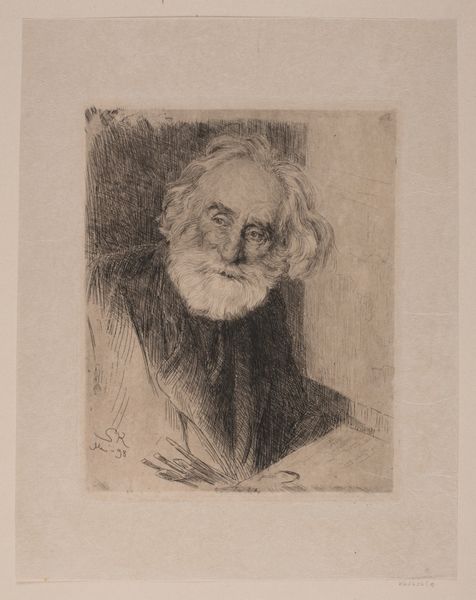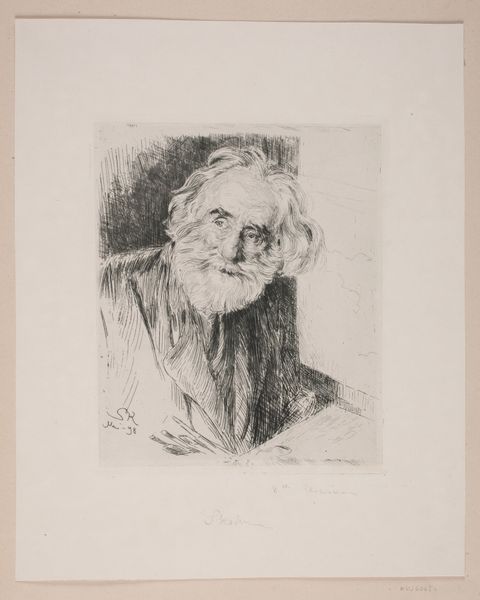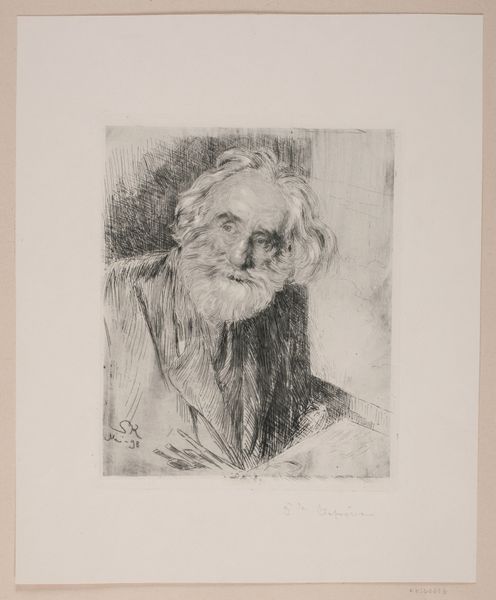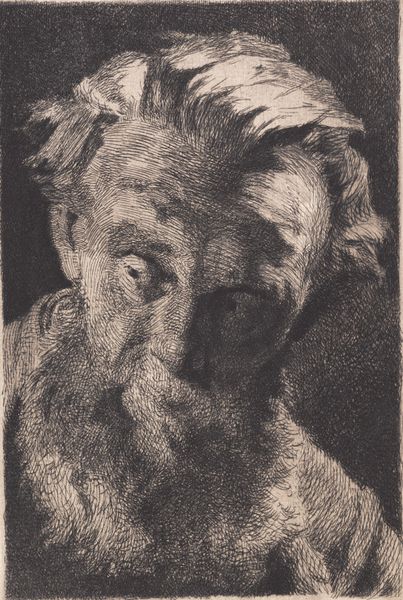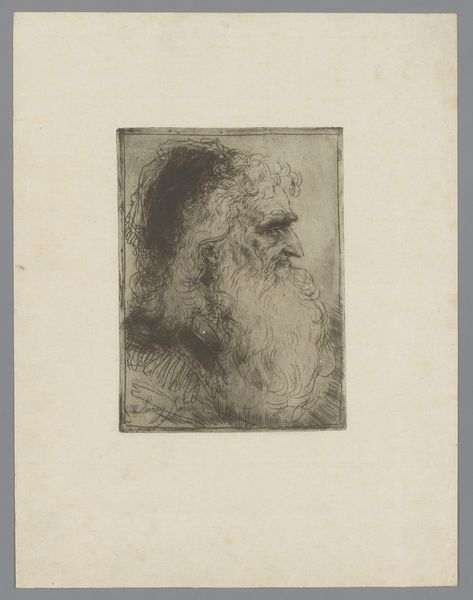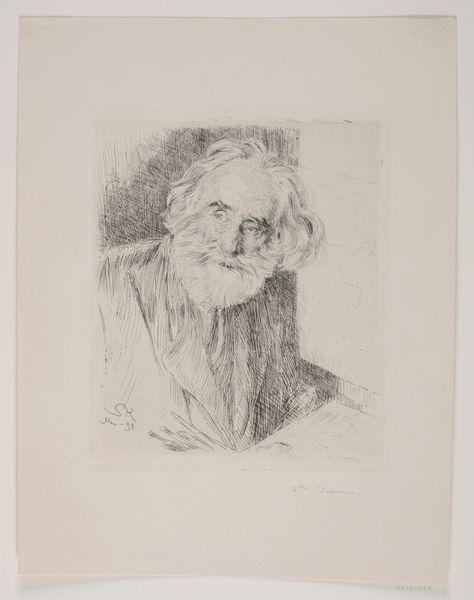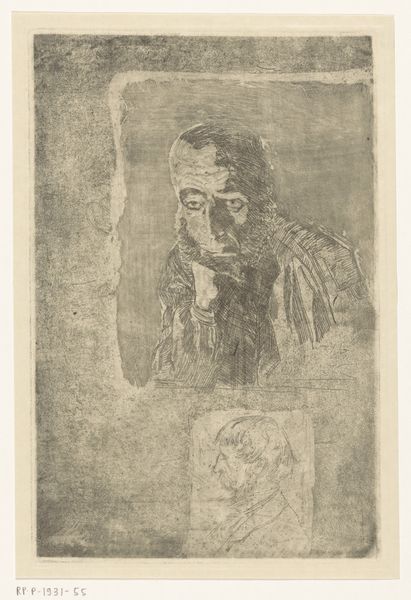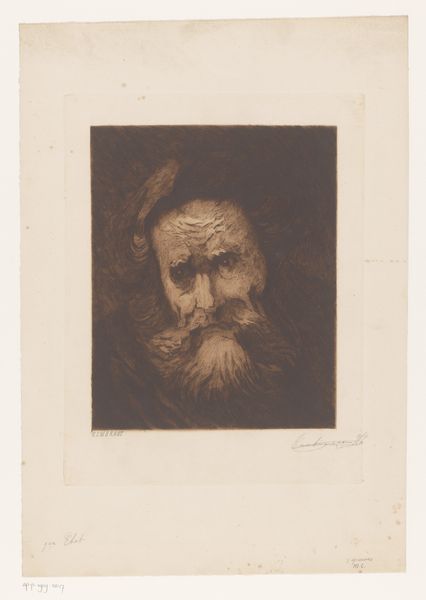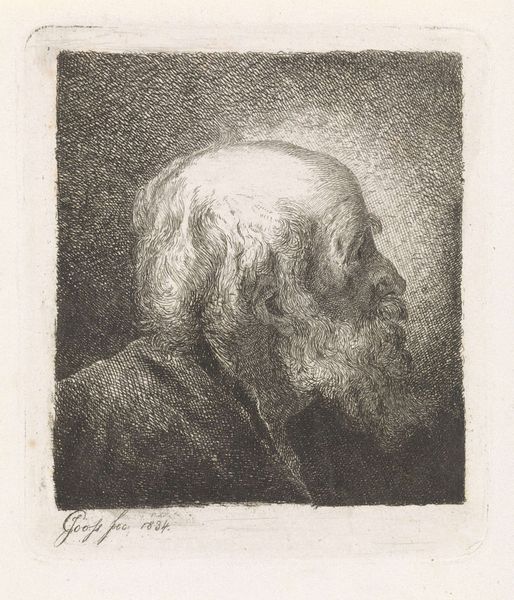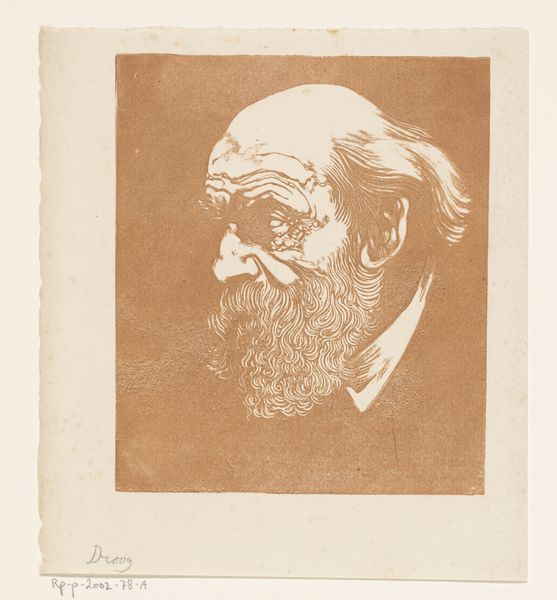
print, etching
#
pencil drawn
#
amateur sketch
#
light pencil work
# print
#
etching
#
pencil sketch
#
charcoal drawing
#
possibly oil pastel
#
charcoal art
#
pencil drawing
#
pencil work
#
charcoal
Dimensions: 216 mm (height) x 178 mm (width) (plademaal)
Editor: This etching, "Portræt af Vilhelm Kyhn," by P.S. Krøyer from 1898, has such a tentative quality, doesn't it? It almost feels like we're peeking into someone's private study. What do you make of its social context, given that it depicts another artist? Curator: Well, consider the late 19th century, a time of burgeoning artistic communities and increasing institutional support for the arts. Kyhn, a landscape painter, would have been a figure of some stature. Krøyer's choice to portray him, and importantly, the *way* he portrays him—in this seemingly unfinished, almost vulnerable state—suggests something about the evolving relationship between artists and their public image. Does it democratize artistic genius? Editor: That's interesting. I hadn't considered the artist's 'brand' as such. Was it unusual to depict someone so casually at that time? Curator: Portraits were often formal commissions designed to project power and status. An etching, though reproducible, lends itself to intimacy. So, it raises questions about artistic circles: Who was this image for? Was it meant for wider circulation, or was it a more private tribute within their artistic milieu? Think about how art academies and salons influenced artistic reputations - how would an etching like this participate in or resist that influence? Editor: It feels less 'official', somehow more relatable, as if acknowledging the working artist beyond the public persona. It definitely prompts questions about the artwork’s audience and function. Curator: Exactly. And that perceived relatability, in itself, is a culturally constructed idea, isn’t it? A deliberate move, perhaps, in how artists wanted to be seen and understood in that changing socio-political landscape. Editor: I hadn't thought about it that way. Thanks, I'm walking away with a totally new understanding of how the art world projected itself back then. Curator: And I’m reminded of the continued role art plays in shaping not only individual identities but collective cultural narratives too.
Comments
No comments
Be the first to comment and join the conversation on the ultimate creative platform.
